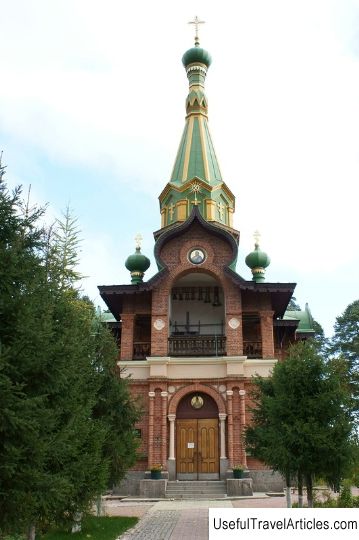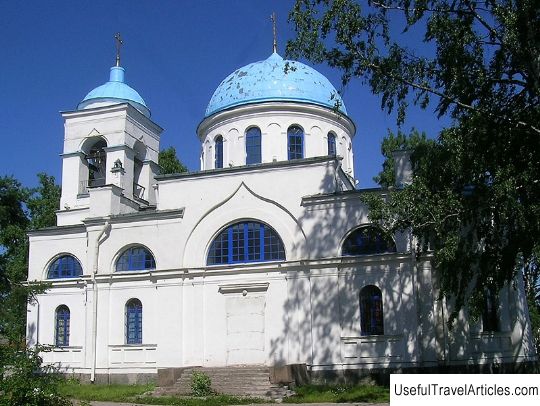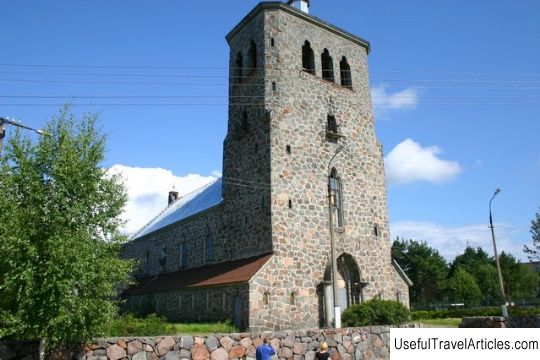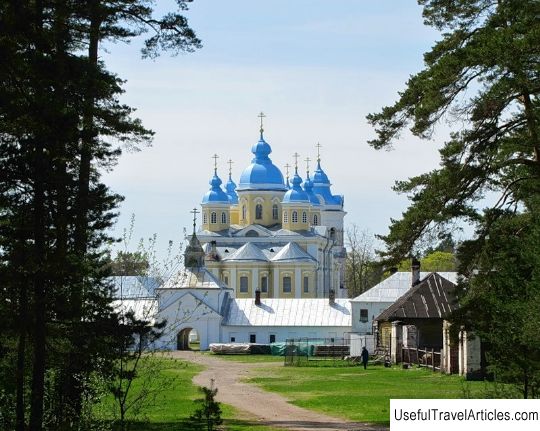Church of All Saints description and photo - Russia - Leningrad region: Priozersk
Rating: 9,3/10 (1765 votes) 
Church of All Saints description and photos - Russia - Leningrad region: Priozersk. Detailed information about the attraction. Description, photos and a map showing the nearest significant objects. Photo and descriptionIn a small town in the northern part of the Leningrad region - in Priozersk - there are courtyards of several Ladoga monasteries, which include the Compound of the Transfiguration of the Savior of Valaam, located at the All-Saints Church, as well as the Compound of the Konev Monastery located at the Church of the Nativity of the Blessed Virgin Mary. In Russia, a tradition has developed that the churches of All Saints were usually erected in cemeteries or near them. This tradition is completely justified, since at all times the relatives of the deceased wanted his Guardian Angel to always be next to a dear person. In the area of the ancient Orthodox cemetery in Priozersk, the earliest burials of which date back to the 60s the 18th century, the All-Saints Church was erected, whose second name is St. Andrew's Church. It is worth noting that the funds required for the construction of the Kexholm Church (Kexholm - this was the name that referred to this city at that time), a total of about 26 thousand rubles, was donated before her death by the daughter of a wealthy merchant Avdotya Andreev. It becomes clear that the relatives of the deceased's elder brother (Fedor) were not at all satisfied with this state of affairs, as a result of which a civil process was conducted for a long time, during which the illegality of the will of the deceased was proved in various ways. Fortunately, most of the jurors were Orthodox Christians, or maybe they were just lucky, but somehow, the trial was won. In the winter of December 17, 1874, in the city of St. Petersburg, the last will of the deceased was fully legalized at the city court session. The original project of the All Saints Church was prepared by order of Martin Stenius, the governor of Kexholm. The project was entrusted to Frans Shesterm (1840-1885), an architect and narrow specialist in Orthodox churches. But the project developed by the Sixth was rejected by the Holy Synod. Arenberg Johann Jacob (1847-1914), who has extensive experience in building Lutheran churches, as well as houses for secular masters, was invited to develop the second project, among which the governor's house in Vyborg and the famous school in Helsinki ... It is clear that this kind of structures had nothing to do with Orthodox construction. Like the first project, the second was also in no hurry to approve. In the spring of 1890, the chief prosecutor nevertheless approved the architect's project, after which the construction of the temple began immediately. Within two years, a full-fledged temple was built from an unplastered red building, lined with Valaam bricks. In 1894, the church was consecrated according to the existing Orthodox rites. Judging by the records of the Holy Synod, at the end of the 19th century in Russia every year from six hundred to nine hundred churches were built. The new temple was built with one dome and a hipped-roof bell tower. In addition, the construction of this church building was an important event for the inhabitants of the western territories of the Russian Empire. But not everyone thought so, because the architect developed the project of the church in the traditional "neo-Russian" style, which is clearly expressed in the elements of wooden architecture, which are not traditional for Russian stone churches, represented by picturesque carved cornices in the interior and exterior decoration. The All Saints Church also reflects elements of five different stylistic styles: Romanesque, Old Russian, Classicism, Baroque and Gothic. The inherent division of forms along the vertical component is clearly reflected in classicism; half-columns, which do not carry any functional component and are necessary only for decorative design, belong to the Baroque style. Most likely, this kind of architectural features, including such an extensive combination of styles, make the Church of All Saints in the city of Priozersk not just original, but literally the only and unique creation of that time.       We also recommend reading Museum of Nature description and photo - Russia - North-West: Cherepovets Topic: Church of All Saints description and photo - Russia - Leningrad region: Priozersk. |




